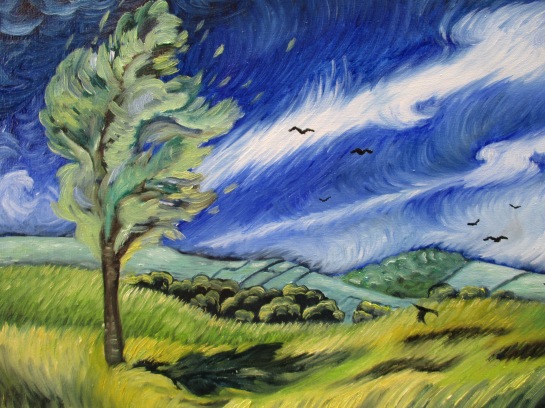When I was a teenager interested in photography I decided that one of the main differences between a good photographer and a bad one is that the good one knows to discard their mistakes. By that reasoning, I am on the road to becoming a really great artist as I have gessoed over a tonne of bad paintings, ready to start again 😉
Another way to become a better painter is to copy works of artists you admire, purely as an exercise of course, otherwise it is plagiarism!
In the Louvre and Prado you can often find students copying great works of art but for those of us not able to get to these places often, I would suggest visiting the websites of Christie’s or Sotheby’s. Their auctions are packed full of the most amazing treasures, paintings by the best artists that, because they are in private hands, are not seen very often. They also photograph them really well, meaning that you can focus in on every brushstroke as you analyse an artist’s technique.
It’s a major bugbear of mine that art books discuss the lives of artists and the iconography but rarely give any detailed examination of the craft of painting. Perhaps this is because craft is a dirty word in a world where the artist’s concepts are everything. I know I am going to sound bitter when I say there will probably be no need to examine exactly how a banana was stuck on a wall with Duct Tape.
I recently, through Christie’s and Sotheby’s auctions, fell in love with the works of Neo-Impressionist Paul Signac. Some of his work is just so unashamedly pretty and that clearly has struck a chord with buyers who pay millions for his works.
I am waiting for a book about him to come in the post, which I hope will provide me with usefully high resolution pictures of his pointillist paintings. I suspect that nowhere in it will I find details about what colours he used, how much mixing he did, whether he sat down and did one section of paiting at a time or let it come together more organically, whether he let layers dry before going back to them, how many layers of dots he used or if he meticulously placed each and every one perfectly first time.
I do know the answers to some of those questions now, but only thanks to the big auction houses and their meticulous photography. I am now busy doing a couple of paintings in the style of Signac but they may take a while. The big one may contain as many as 40,000 dots.
Since I should include a picture in this post, I shall leave you with this little one.

Wind in a Wortley Wheat Field
This is of course Van Gogh’s lesser known work, Wind in a Wortley Wheat Field…with Crows.
We found the field on a recent cycle ride and the swooping crows and the way the shadows chased each other across the wheat reminded me so much of a Van Gogh that I had to paint the scene.
It was an absolute pleasure to use such bright colours and to move the paint around with deliberate strokes that describe the movement of the scene. Each stroke had to be considered because to overwork it would be to create mud.
That brings me to a key thing that can separate good art from bad – the feeling that each line or colour has purpose, was done with intent and not by accident. I have been trying to achieive that for some time now but by copying Van Gogh’s style, I feel I have taken another step in the right direction.
Try it yourself.
I really like it, I love how the sky looks in this one!
Thanks Ed. Having disliked the impressionists when i was a child and they were almost the only thing the art teacher taught us about in terms of art history, I think i have finally come round to them. I’m a bit stubborn that way 🙂